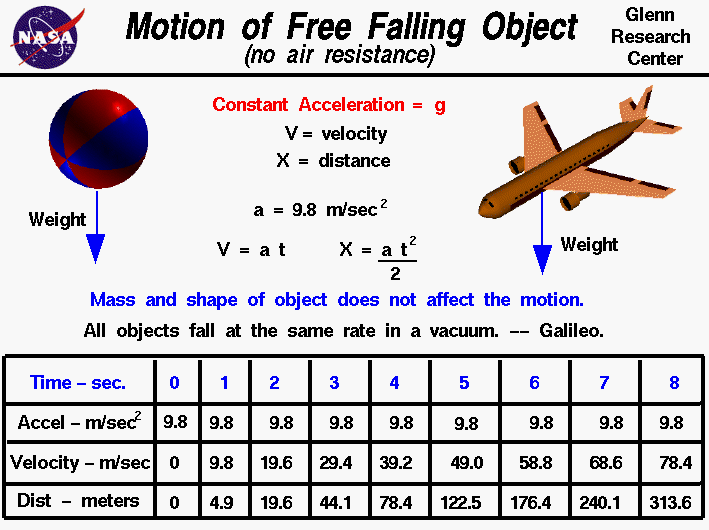

The object when it is at height h 1 has the potential energy U 1 associated with it. Since the object is at rest on the table its initial velocity u = 0 and hence the kinetic energy is also nil. When the object is raised at a height from above the ground it gains some potential energy which is then converted into kinetic energy and is utilized during its flight.Ĭonsider an object of mass ‘m’ kept on the table of a height h 1, it experiences an external force and gains momentum, and starts accelerating towards the ground. Based on this fact we can calculate the velocity of the object irrespective of time. Linear velocity is time-dependent and is a ratio of change in position along with time.Īn object falling is accompanied by energies within it, in the form of kinetic energy and potential energy, and energy can neither be created nor can it be vanished.
#EQUATION FOR FREEFALL POSITION HOW TO#
How to Find Velocity of a Falling Object without Time? Hence, when the ball will cover a distance of 60 meters, the velocity of the ball will be 9.8 m/s. If the initial velocity of the ball is 4m/s, what will be its velocity when it will cover a distance of 20 meters? Problem1: A ball is moving in a rectilinear motion with an acceleration of 2m/s. The above equation is independent of time and shows the relation between the initial velocity of the object, the constant acceleration, and the displacement of the object. V avg=V final+V initial/Total Number of velocities Here, we have two velocities, the initial velocity ‘u’ and the final velocity ‘v’, therefore the average velocity is The average velocity is the sum of all the velocities attained by the object in different time intervals divided by the total number of velocities summed together. Now, this equation is a time dependent equation, and time ‘t’ from the above relation is equal to Since acceleration is equal to the change in velocity with time, i.e. Let us measure the area covered by the object, the total area will be equal to the sum of the area of the triangle (∆ABC) and the quadrilateral (□ACDO).

The above graph is related to the displacement by the relation as shown in the eq(1). Since velocity is the ratio of change in position with varying time, displacement will be equal to From the graph, we can read that the time T=0, the velocity=u, and at time T=t, the velocity=v. Let us see how to find the final velocity without using the time character.Ĭonsider a velocity-time graph showing the variation in the velocity of the object in a uniform linear motion with respect to time. The velocity attained by the object over the period of time until it stops accelerating for the duration is said to be the final velocity of the object. The accelerating object changes its velocity with time. The energy of the object is conserved, based on this fact the velocity of the object is equal to the square root of twice the product of its acceleration and the distance that it elapses, also depending upon the initial velocity of the object. In this article, we are going to learn various ways on how to find velocity without time along with examples, some facts, and how to solve related problems.


 0 kommentar(er)
0 kommentar(er)
